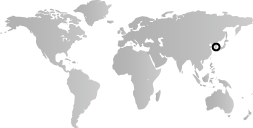The first half of the twentieth century in Korean history is marked by two grave and painful experiences: the Japanese occupation between 1910 and 1945 and the Korean War of 1950–53. These events dominate the collective national psyche for generations. The legacy of the colonial period is complex and fraught with emotion. The Japanese colonialists’ push toward modernization brings tremendous technological, and consequently social, advances, such as the building of infrastructure and the development of modern school systems. The Japanese also carry out the first modern archaeological excavations of ancient Korean sites (royal tombs, temples, ceramic kilns) and preservation of their artifacts. On the flip side is the question of the colonialists’ intentions and their methods in these cultural endeavors, and more seriously, war crimes of torture, rape, and killing. In the postcolonial period, Korea struggles with the issue of how to reconcile the positive developments of the colonial era and the unforgettable brutality, humiliation, and loss.
The second half of the twentieth century witnesses rapid changes and developments in all aspects of (South) Korean society: economic, political, social, and cultural. Astonishing economic progress—even through periods of political turbulence—enables a self-conscious and appreciative exploration of traditional Korean arts and active participation in international exchanges of culture. In the 1980s and the ’90s, especially, South Korea expands its cultural presence around the world through the establishment of Korean galleries at museums and academic posts in Korean studies at universities.
(N.B. Because so little factual information is available on North Korea, a communist state still closed to the outside world, the post-1945 list of events in the Key Events section below concentrates on South Korea.)
